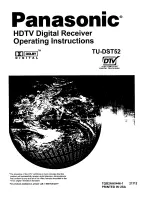
Introduction
Chapter 1
WAAS G-III Reference Receiver User Manual Rev 1
17
1.2.2
Cross-Correlation Detection
Cross-correlation detection is a critical component of integrity monitoring systems such as the SBAS. Cross-
correlation can happen either during acquisition or while tracking.
The receiver tracks a satellite by maximizing the correlation between the received satellite's PRN code and the
locally generated code. Occasionally, this correlation is affected in the presence of another stronger satellite
PRN. Subsequently, the receiver tracks the incorrect cross-correlation peak of the other satellite PRN code
instead of correct main-correlation peak. In other instances, the receiver can track the minor correlation peak of
the received PRN code rather than the correct main correlation peak. Both situations lead to errors in range and
C/No estimates. GPS L1 C/A, SBAS L1 C/A and GPS L5 signals are particularly vulnerable to cross-
correlation.
The G-III Reference Receiver technology ensures independent real-time monitoring of cross-correlation for
GPS L1 C/A, SBAS L1 C/A, and GPS L5 signals. If at any point it detects the presence of cross-correlation, it
terminates the tracking. The channel then attempts to re-acquire the satellite signal.
1.2.3
Bit Synchronization
Bit synchronization identifies the location of navigation bit edges with respect to the primary PRN code
epochs. Bit edge detection is based on observing either the sign transition between successive accumulations
that are aligned with the received PRN code epochs or by aligning to the secondary synchronization codes. The
bit synchronization is verified by an additional hardware channel and software steering. This additional
hardware is configured to generate a stream of accumulations until sufficient data has been collected to perform
the test. The tracking channel is forced to re-acquire a signal if the results of the second test do not confirm the
bit alignment selected by the tracking channel.
1.2.4
Signal Quality Monitoring
Signal Quality Monitoring (SQM) technology monitors GPS and GEO signals in space for anomalous
behavior. To do this, the G-III Reference Receiver outputs accumulations at the specified correlation location
values. It collects inphase and quadrature accumulation values and outputs them in a timely fashion. The G-III
Reference Receiver hardware is capable of tracking the correlation function at multiple correlation locations.
1.2.5
Digital Pulse Blanking
Digital pulse blanking involves removing or attenuating pulses in the RF signal that exceed a specified level.
The G-III Reference Receiver provides digital pulse blanking for the L1, L2 and L5 signal paths.
Use the
PULSEBLANKING
command to enable/disable pulse blanking or to control its sensitivity. See
Section
4.4.17, PULSEBLANKING
on
Page 67
.
1.2.6
Time Receiver Autonomous Integrity Monitor
The Time Receiver Autonomous Integrity Monitor (TRAIM) is the algorithm in the G-III Reference Receiver
that computes the receiver time offset relative to the GPS time (within ± 150 nanoseconds) with a high level of
integrity. The TRAIM algorithm computes the time offset, excluding unhealthy satellites, and compares the
time using a minimum of 4 satellites. With good ephemeris health status from 4 or more satellites, the
computed time offset should typically be within a few hundred nanoseconds. The results from TRAIM
calculations are contained within the
TIMESOLUTIONB
log. For more information about this log, see
Section
5.5.19, TIMESOLUTIONB
on
Page 125
.
















































